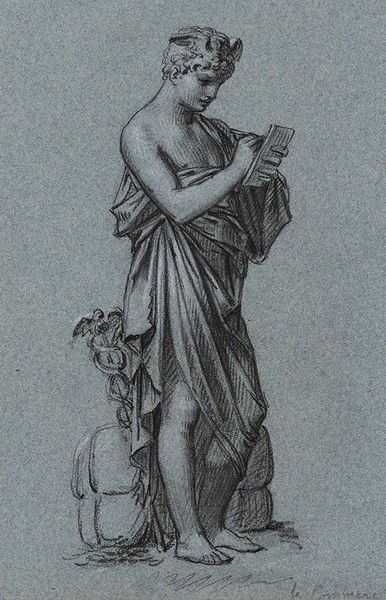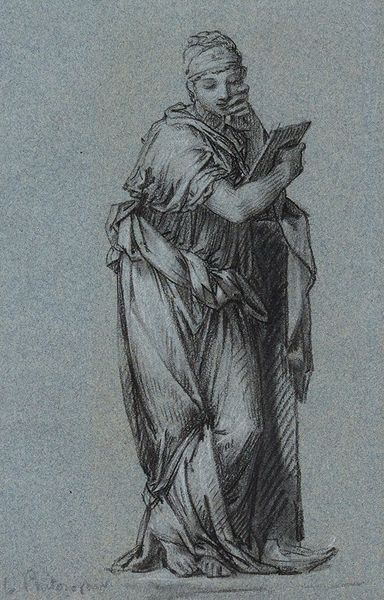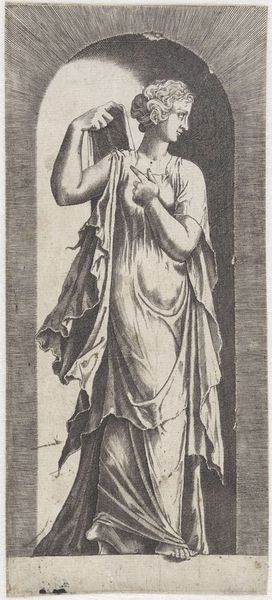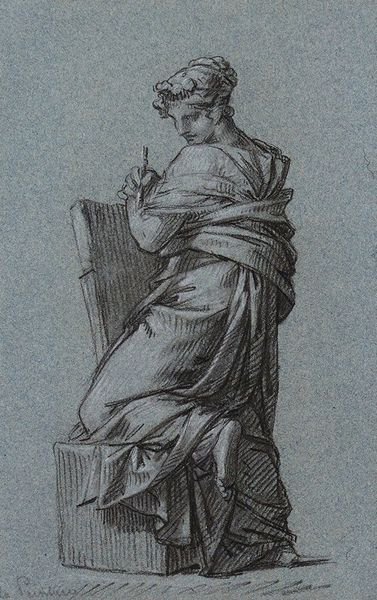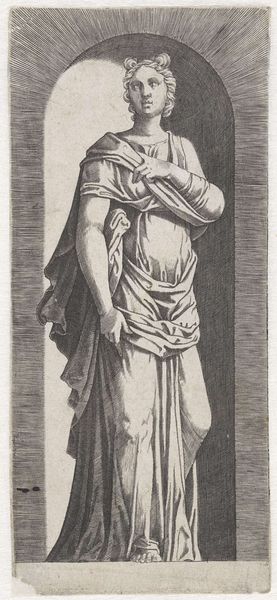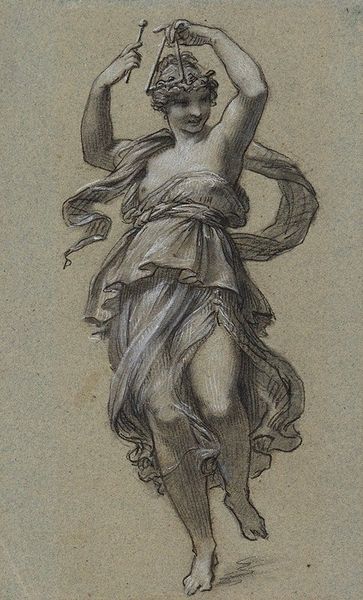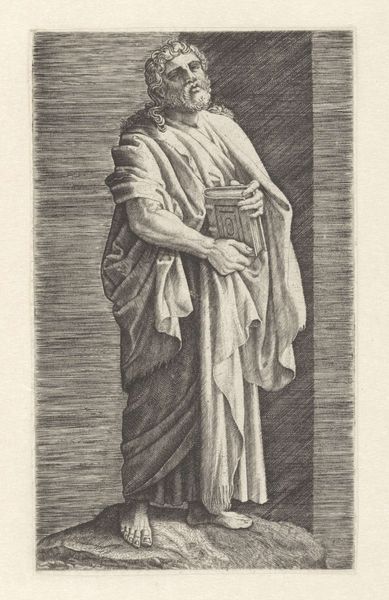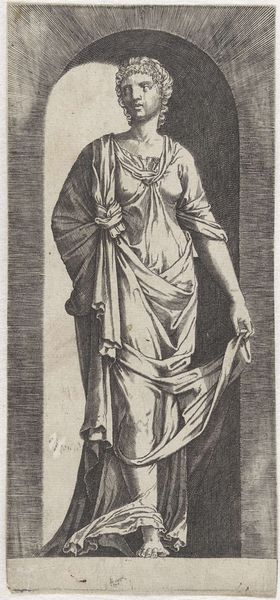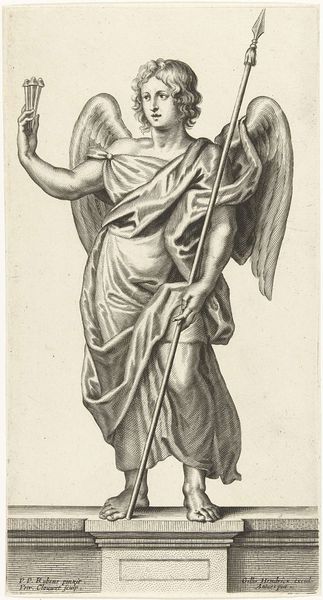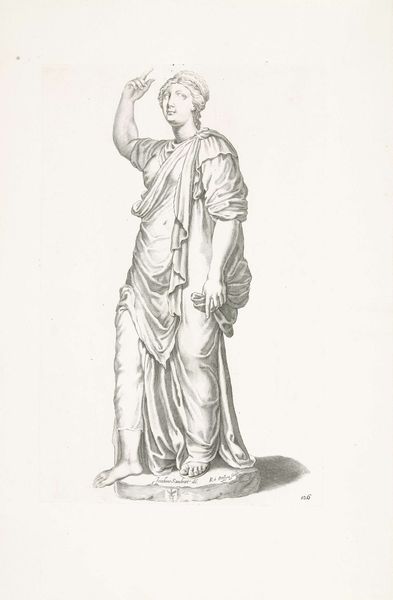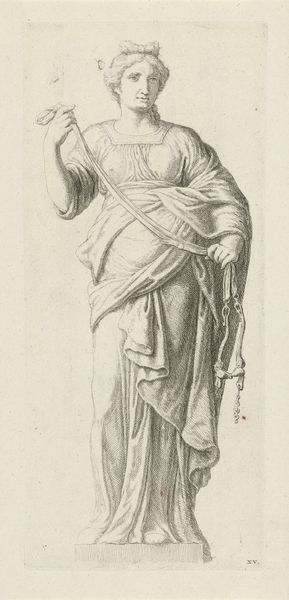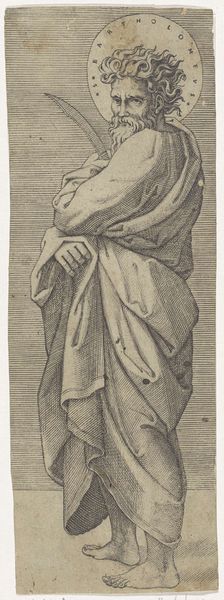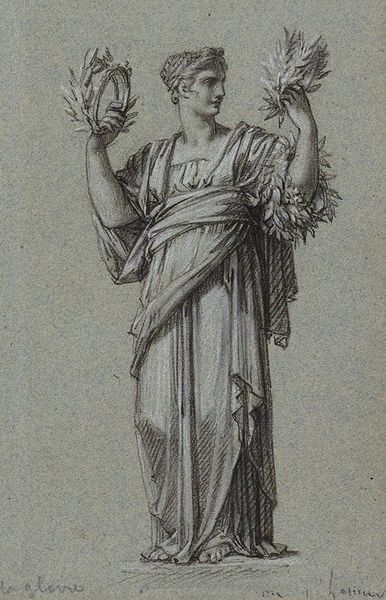
drawing
#
portrait
#
drawing
#
neoclacissism
#
figuration
#
line
#
portrait drawing
#
history-painting
#
academic-art
Copyright: Public Domain: Artvee
Editor: Here we have Pierre-Paul Prud'hon's "L’Industrie," a drawing from 1810. The way the figure is rendered in these delicate lines, and the monochromatic palette gives it a neoclassical feel, almost like a study for a sculpture. What do you see in this piece, from your perspective? Curator: Formally, I find Prud'hon's strategic use of line and shadow particularly compelling. Observe the nuanced hatching which articulates the drapery, giving it both weight and fluidity. The figure's contrapposto pose, though subtle, creates a visual tension that enlivens the composition. The symbolism, rendered through specific lines and carefully chosen composition, seems to speak of innovation and human ingenuity. Note how the light catches the planes of the figure's face, further drawing our eye. Does this drawing call to mind other works you’ve studied, or a historical through-line, stylistically or formally? Editor: I see how the light emphasizes the subject. Perhaps the lines on her face, specifically, speak to wisdom that only hard work brings? It feels as though Prud'hon isn't just showing industry but intellectual activity. Looking at the lines gives her dignity and elegance in this pose of contemplation. I also think I now understand the connection of neoclassical to earlier sculptures as you were asking me. Curator: Precisely. Through line, light and form, Prud'hon crafts an idealized representation while still hinting at the grit and determination inherent in industrious pursuits. Thank you, this close looking enriches how I interpret his composition. Editor: I learned how the medium creates meaning and how important lines can be, making them almost characters in themselves.
Comments
No comments
Be the first to comment and join the conversation on the ultimate creative platform.
